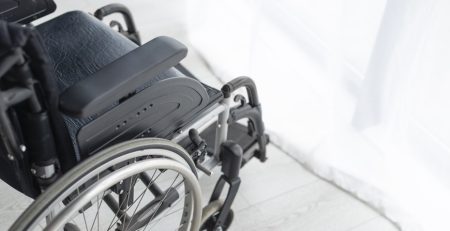- No products in the cart.
Tips for personal safety when using a wheelchair
While mobility devices are remarkable and sophisticated pieces of equipment, they can pose a safety risk if they are not fitted appropriately or if individuals are not properly trained in their use. As with anything, practice makes perfect. All it takes is a little time and effort for you to become well-versed in the workings and features of your wheelchair. Whether you are a new wheelchair user or someone who is seasoned in the workings and use of such mobility devices, it is important for everyone to maintain safety as their first priority. Here are some ways you can keep your own safety (and simultaneously the safety of others) at the forefront of your mind.
Get your vision regularly checked
One of the key components to appropriately steering your wheelchair is having good vision. This ensures you are able to clearly see doorframes, steps, and thresholds as well as depth on certain surfaces such as inclines, poles, parking barriers, and more. Individuals should have proper vision that allows them to safely get in and out of their chair, be aware of all their surroundings (in front of them, behind them, and on both sides), and seek help if needed.
Exercising consistently
In order to continually operate your wheelchair and maintain appropriate joint and muscle function, you should be sure to stick to a regular exercise routine. This includes plenty of upper body exercises (such as bicep curls and chest presses, either with or without added weights) so that individuals can easily readjust in their chair as well as get up and sit down with little to no assistance. Your exercise routine should also include walking whenever you are able, if this is something you are capable of (which may be the case for individuals who use their wheelchair for symptoms like chronic fatigue or dizziness rather than complete immobility). If you do not know where to begin in terms of exercise, ask your doctor for a referral to a health professional such as a physical therapist or occupational therapist to assist in developing a plan specific to your medical needs and goals.
Don’t lean too far forward
Unfortunately, many individuals may feel too comfortable moving around in an unsafe way in their wheelchair. Some people may view it as no different than a regular chair or other seating accommodation. This most often means that individuals might lean too far forward in their wheelchair to get an item on the floor or on the other side of the table. Such an instance is the perfect opportunity for wheelchair users to take advantage of assistive devices such as reachers (to help them get hard-to-reach items), sock aids (to prevent the need to bend over and put socks on), long-handled shoe horns (to avoid the need to lean over and get the back of shoes on), and other extendable options.
Brakes, brakes, brakes
This one cannot be stated enough. Brake safety is one of the biggest ways that wheelchair users injure themselves and people around them. You should be well-versed on the use of brakes before beginning to use your wheelchair. The basics include locking both sides by grabbing each handle separately and pushing forward until you hear and feel a “click”. Similarly, unlocking can be done by grabbing each handle and pulling back until each wheel is freed up. If you are unable to securely and firmly grasp these handles, be sure to shop for an accessory that pads the grip more or extends the handle so you can more easily see and reach it. Individuals can also opt for reflective material to illuminate the handle for easy access. Individuals should be sure to engage these brakes each and every time they reposition in their chair and get in or out of their chair.
Remember caregiver safety, too
If you have a loved one or aide who assists you in maneuvering your wheelchair, be sure that they are equally well-verse in the ins and outs of wheelchair use. They should be able to safely access the handlebars to push you where you need to go, remind you to lock and unlock brakes as needed, and avoid obstacles in your path when steering. They should also use appropriate body form and lifting techniques, when relevant. Ergonomics is key for you as well as them, so they should be sure to stand upright as much as possible when pushing your chair. If and when they assist you in getting in and out of your chair, they should use their arms and legs to stabilize and move you rather than relying on their back to take the brunt of the weight. When pushing up inclines, they should attempt to lighten the load as much as possible by turning you around and pulling the wheelchair up as far as they can. They should also safely be able to navigate curbs by using handicap recesses in sidewalks (when available). If these tools are not available, they can align the front of the chair with the curb. This will make it easier to then lift the two lighter, front wheels up on top of the curb followed by the two larger, back wheels. This is easier on them and also prevents any accidents that may cause you to fall out of your chair.
Let’s face it — the reason that people seek mobility assistance from wheelchairs is because they don’t feel comfortable or safe continuing to walk without one. So why would you lose this focus on safety once you are in your wheelchair? Always be sure to keep your safety a priority any time you use your wheelchair to get around, as this is in the best interest of you and those around you. Using proper body mechanics can assist both you and your caregiver in exerting less energy while preventing bodily injury. Focus on steering clear of any hazards and removing obvious and subtle obstacles that may be in your way, including exposed wires, boxes, piles of paper, fallen clothing, etc. This will go a long way in ensuring your safety while using a wheelchair across all settings where you may travel.















